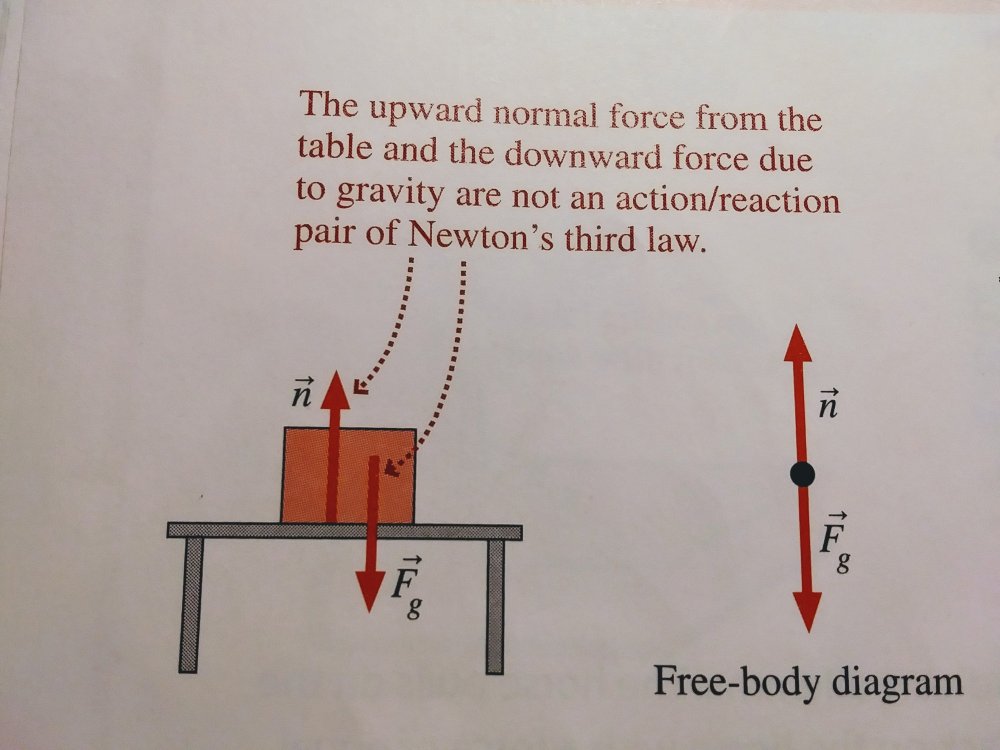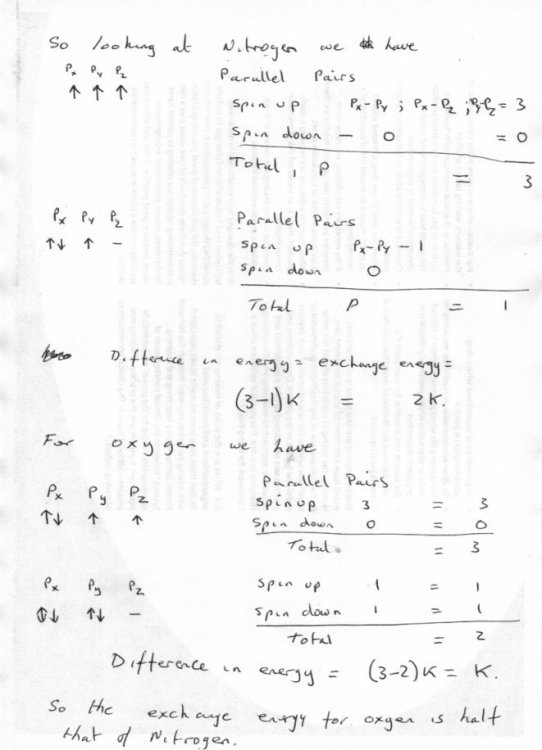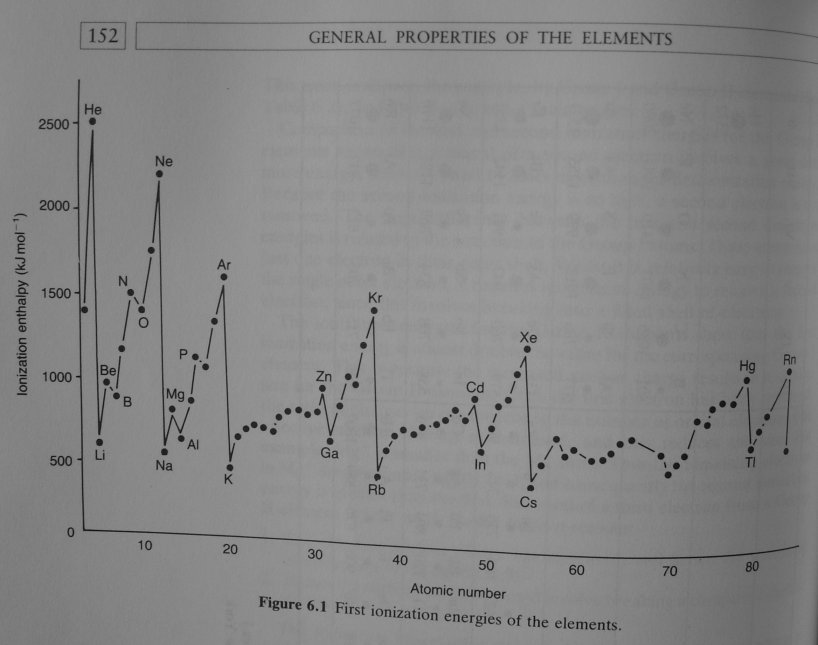Leaderboard
Popular Content
Showing content with the highest reputation on 05/26/20 in all areas
-
You did ask for an intuitive answer, and I offered a simplified 'ball park' answer. The full VDW analysis leads to more insight, including the fact that there are two inversion temperatures at a given pressure and above a certain pressure the gas is permanently inverted. But the treatment is fully mathematical. [math]\frac{{2a}}{{R{T_I}}} - \frac{{2abP}}{{{R^2}T_I^2}} - b = 0[/math]2 points
-
2 points
-
Why is it apparent that small things determine how big things work and not vice versa? Why is cause and effect noncommutative with respect to "size". In the sense that CAUSE is due to some physical laws: Quantum fluctuations CAUSE real and virtual particles. Real particles cause leptons, quarks, bosons. Leptons and quarks cause protons, neutrons and electrons. Protons neutrons electrons cause hydrogen helium and carbon atoms. Hydrogen, iron and oxygen cause stars, planets, and water. Stars, planets and water cause galaxies, solar systems, and oceans. Galaxies do not cause stars. Stars do not cause hydrogen. Hydrogen does not cause protons. Protons do not cause quarks. Quarks do not cause real particles. Real particles do not cause quantum fluctuations. The direction of time is forwards? The direction of cause is bigwards?1 point
-
You probably just forgot to write the word operator after the word vector. In vector calculus, divergence is a vector operator that operates on a vector field, producing a scalar field giving the quantity of the vector field's source at each point. More technically, the divergence represents the volume density of the outward flux of a vector field from an infinitesimal volume around a given point. https://en.wikipedia.org/wiki/Divergence From the point of view of physics (and in a strict sense and in the sense of intuitive physical image of a mathematical operation) the divergence of a vector field is a measure of the extent to which a given point of space (or rather a sufficiently small neighborhood of a point) is a source or a drain of this field: div F>0 — point field is the source; div F<0 — the field point is a drain; div F=0-there are no drains and sources, or they compensate for each other It is quote from the Russian-language version of Wikipedia, the English-language version does not have this https://ru.wikipedia.org/wiki/Дивергенция1 point
-
I read all the explanations on this topic, but I still see the example as a contradiction to Newton's third law. Here's my reasoning: Book pushes on desk with force Fab; Desk pushes on book with a Fba. Equal but oppositely diected forces, with the forces acting on different objects consistent with Newton's third law. The same approach is applied in statics with the book being replaced by a truss. The forces applied through truss are transmitted to the reactions(desk). The force reactions are opposite but equal to that of the corresponding member. Here's a similar situation to the example I gave but in this case, the website claims the interaction is a consequence of Newton's third law: "Figure 1. The force arrow for either direction begins at the surface(the black dot). Due to Newton's third law, the normal forces will be equal in magnitude and in opposite direction. The normal force always makes a 90 degree angle with the surface (perpendicular)."https://energyeducation.ca/encyclopedia/Normal_force1 point
-
But the best bit is the title: Your Brain Is Not an Onion With a Tiny Reptile Inside https://journals.sagepub.com/eprint/TWK8BX6W2M4FFRTYXBZD/full1 point
-
First let us take a look at your question in a more general context. Looking at the first ionisation energies down and across the periodic table we can see that although the periodic repetition is evident the variation variation with a period is not smoothly progressive but is broken by some reversals such as with nitrogen/oxygen and also with phosphorus/sulphur and arsenic/selenium which are in similar positions. So it is worth looking for some general principles to explain this. Now nitrogen has 3 outer p electrons and oxygen has 4. The standing rules for placing electrons in orbitals are due to Hund and are basically those of maximum separation. They follow the idea that the placing of two electrons in one and the same orbital has higher energy than placing them in separate ones due to electrostatic repulsion. This is true but not the whole story. Electrons have another repository for energy - quantum spin or spin/spin interaction. The absolute value of this energy is much smaller than the orbital energy, however its presence can modify the orbital energy by a small amount. This amount is called the exchange energy and is a function of the number of pairs of electrons in different orbitals with the same (or parallel) spin. So if P is the number of pairs with a given spin (up or down) and K is an energy constant we have exchange energy = P x K Note you cannot have parallel spins in the same orbital but spin up and spin down count separately so in a full orbital the up and down spins can each be parallel to an electron in a different orbital. I have worked out in detail the exchange energies for nitrogen and oxygen in the next attachment. Finally it is worth taking a look at the whole period and noting that exchange energy has zero value for some atoms. (Note The Beryllium/Boron reversal is due to the change from s to p orbitals) Here is a neater summary table for all 6 possible p electrons.1 point
-
It might be worth explaining the bizarre unit- the "inch of vacuum". It is, as I said, like trying to describe the thickness of a coin by measuring the difference between that thickness and the width of your thumb. The original idea was fairly simple. You got a mercury filled barometer. http://www-mdp.eng.cam.ac.uk/web/library/enginfo/aerothermal_dvd_only/aero/fprops/statics/node15.html, Then you connected the top of it to your apparatus. The better your pump was, the more it pulled the mercury up. And if your use for a pump was pulling water out of a mine shaft, that's probably as good as it needed to be. You could pull water roughly 13 times further , because it's 13 )or so) times denser than water. The problem is that the pump doesn't pull the mercury up- the atmosphere pushes it up- and the atmosphere is variable.. Well, that's still OK if you need to know if your pump is pulling water out of a mine, because the head of water is also affected by the atmosphere. But, if you want to get a reasonably accurate measurement, you can't use the atmosphere as a reference point. (OK, technically, you can- if you measure it accurately). If the actual atmospheric pressure varies by an inch of mercury, that isn't going to make much difference to the mine pump. A change between 20 inches and 21 isn't worth worrying about. But, if you are actually working with a pressure that's less than an inch of mercury, your "reference" point varies so much that you can't tell if your pressure is positive or negative (well- it' can't really be negative, but that';s what the gauge.would show). None of that will actually help answer the OP's question. Because the question is like saying "my antique clock keeps time to +/- 30 minutes a day. IS that good enough?" Good enough for what? If the OP ever actually tells us what question they want to answer, we might be able to answer it.1 point
-
Kinetic energy is an observer-dependent quantity, so it is best understood as a relationship between the two reference frames in spacetime. It is in itself not a source of gravity. Neither one of these are in themselves sources of gravity. What enters into the field equations as part of the energy-momentum tensor are momentum density and momentum flux. These are neither linear nor angular (the distinction is just a convention anyway). If there is any kind of momentum present in a gravitational source, then it will contribute to one or both of the aforementioned quantities, but the way it does so is not always trivial; in fact, finding the energy-momentum tensor for a given distribution of matter-energy can be a very difficult task, particularly if the distribution is not static or stationary. If the kinetic energy is evenly (statistically) spread out over the entire distribution, then you can sometimes simplify things by letting it enter as a contribution to another component of the tensor, the energy density. This is just the last case I mentioned above - refer to equation (16) in that paper. The kinetic energy becomes a contribution to the energy density term of the tensor. Physically this means you are describing a different system (one that has a higher temperature as compared to a reference system), not the same system in motion. That’s because you haven’t produced a model yet, you have thus far only described an idea you have had, and how you yourself understand that idea. The next step from here would be for you to actually write down a model - i.e. a field equation for the time dilation field you are proposing -, and then see what kind of predictions that model yields, and how they compare against experiment and observation. Remember, it is always good to have ideas, but it is for yourself to investigate the scientific value of that idea - you can’t just assume your idea is “right”, and then ask for others to show you wrong. Yes, that is the right approach1 point
-
Nice post. On the same stance: Inside versus Outside: a past light cone spreads always outside. The past is always far away from the observer (The galaxies are several million years in the past) and the more you get closer the more you reach present time (our Moon is only a few seconds in the past. Ultimately, the present will be reached when contacting the observer. The direction of time is from the outside (Past) to the inside (Present) Now maybe you can equate "big" with "outside", I'll have to think about it.1 point
-
Not just one twit, Stringy. Apparently the US has a whole lot of twits; some masquerading as medical experts. The American Association of Physicians and Surgeons is also lobbying for increased prescribing of Hydroxychloroquine. https://www.theguardian.com/us-news/2020/may/24/hydroxychloroquine-trump-us-doctors-coronavirus The AAPS has previously claimed that HIV may not cause AIDS, that abortion causes breast cancer, that vaccines are linked to autism, and even that B Obama used hypnosis to trick voters. My first thoughts on reading this article was that maybe the AAPS is a comedy group...1 point
-
A pretty interesting PhD thesis in the years ahead would be to compare infection and death rates by party affiliation and/or news source1 point
-
Ok. I'm more trained in statistical mechanics, but from what I remember about real gases, and taken the cue from Studiot's post with the definition of the Joule-Thomson coefficient --which I had forgotten completely, I must confess--. b is the volume of the molecules (or 3x#molecules, I don't remember). So what's playing a role there is the size of the molecules as little hard impenetrable balls. It you take a look at the Van der Waals potential energy, it looks something like this: So it is slightly attractive at long distances but becomes strongly repulsive at short distances. Now, as the temperature from a statistical point of view is the average energy per degree of freedom, large temperatures imply that your molecules get to the range in their collisions that looks like the steep repulsive force you're seeing on the curve. The more average kinetic energy (temperature) the closer you approach the "hard ball" regime, so to speak. That's the only intuitive explanation I can think of. And as the b (the effective size of the molecules in the hard-ball model) is playing a role in your coefficient, I would say that could be the reason. I hope it helps.1 point
-
Except to highlight the difference between unbalanced forces and action/reaction pairs.1 point
-
Well unfortunately for me, I have tried to "truly" learn some physics previously, but I came across unscalable walls and bottomless pits. The biggest obstacle for me was the mathematics. I simply don't understand them. I can follow instructions. I can find the area bounded by two hyperbolic functions. I can follow matrix calculus operations. But I can't understand them. They have no "meaning". There are mathematical techniques and tricks that are used that I can accept are true, but I cannot logically comprehend them and cannot apply logical proof to the equations once they are added. In addition I have questions about the legitimate use of some mathematics. There are some assumptions that are taken for granted, or at least rarely mentioned, but these assumptions underlay ALL the conclusions that are drawn from the results the mathematics give. Just for example, off the top of my head, integration relies on a coordinate system that is "uniform", that is the gap between integers are consistent, but what if it isnt? That throws integration out of the window. Any integration with respect to Time from zero to infinity, assumes that it is uniform and consistent from the beginning and forever What evidence do we have this is so? Sure you can calculate the area under a curve...but only if you assume your axes are consistent and uniform. What if the gap between 2 and 3 was larger than the gap between 1 and 2, such that 1 +2 =/= 3? We already know space expands, that is, the axes are stretched. Are they stretched evenly everywhere at the same time? Do two volumes of space mutually exclusive from each other's observable universe and future universe stretch at the same rate? How does space expansion reconcile with an isotropic universe? The second biggest obstacle for me was the scope. If you want to "truly" know one thing, you have to know ten other things first, the rabbit hole never ends. I am truly awestruck by how vast the scope of physics is. It is like running up a mountain of infinite size, and everytime you summit a local maxima, there's ten more summits behind. The third problem was time and attention. I don't have the time or the attention or even the ability to learn all the things I need to know to answer my own questions. The bottom line is, I am resigned to forever never truly understanding anything, and forever asking questions like a child.1 point
-
I can't say I do, I'm sorry. I'm thinking of taking a back sit on this one. I'm not ready for this discussion... just yet. I want to read more arguments. Yes, I did. I had nothing to add to that one. Yes and no just doesn't do it for me. It's just that I want to take a break from fundamentals of QM for a while. I've had so much arguing for years with my friends from university... There's been so much nonsense said and written about it through decades that I feel overwhelmed. It is entirely possible that I misinterpreted. Occasionally I need to take a step back and let everything sink in.1 point
-
1 point
-
Yeah my "point particle" objection is philosophical. To me, it's obvious that a point particle is unphysical but that doesn't mean it isn't useful in modeling. This isn't the first time, or even the first forum, where this has been discussed. The covariance of the tensor has also been mentioned in the past, and I understand the thought process -- "if the tensor is zero in one frame then it's zero in all frames." If objects A and B are in relative motion, where does the energy "between" A and B exist? I can't answer this. This enters the realm of philosophy, because we suspect that it exists...but neither at A nor B. Why would angular momentum cause additional gravity but not linear momentum? Why would photons be affected by other photons traveling in opposite directions...but the same isn't true for massive particles? Those were my initial thoughts, but the fact is that GR does claim that kinetic energy increases gravitational attraction. Not easy to find discussion on the topic, but it does exist. https://cds.cern.ch/record/398687/files/9909014.pdf Maybe it would be constructive to explicitly identify topics. I think I've fielded a few objections, and the latest one is whether or not gravitational attraction and time dilation are dependent variables. I don't believe we've produced a counter-example, yet. I didn't know we were arguing anything. If my model can't withstand scrutiny then I'll adjust or abandon it. And I do believe that an electron experiences gravity, I just don't believe that it is a point particle (i.e. "EM mass") -- that fact is discussed in the OP, with references, if you're truly interested.-1 points














